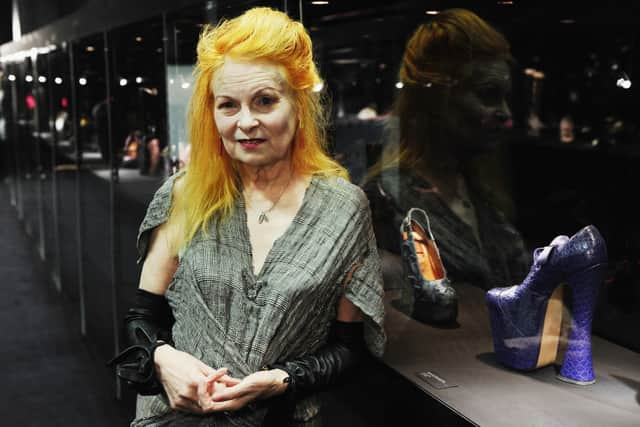Where was Vivienne Westwood born? Life and death of fashion icon, did she have a husband and children
and live on Freeview channel 276
Celebrities have paid tribute to Dame Vivienne Westwood, whose passing at the age of 81 has been characterised as making the world "already a less interesting place."
The innovative fashion designer gained notoriety in the 1970s fashion world thanks to her androgynous designs, slogan t-shirts and rebellious demeanour against the status quo. Westwood is credited for a playing big part in the success of new wave and punk fashion.
Advertisement
Hide AdAdvertisement
Hide AdWestwood died on Thursday (29 December) “peacefully, and surrounded by her family in Clapham, south London”, her representatives said. No further details about her death have been revealed so far.
Here is everything you need to know about her.
Who was Vivienne Westwood?
Westwood was born in Cheshire in 1941, and is widely acknowledged for her unique designs that helped bring punk and new wave fashion into the mainstream. High-profile figures frequently wore her creations, including Princess Eugenie, who wore three Westwood designs for different elements of Prince William and Kate Middleton’s wedding.
With her provocative designs, the self-proclaimed queen of punk brought controversy to the world of anti-establishment fashion, and gained notoriety for her unconventional and unique interpretations of conventional British fashion.


She opened a shop with her then-partner Malcolm McLaren on the King’s Road in 1971 – later called SEX – which was frequented by some of the biggest names in punk – including the Sex Pistols, who McLaren managed.
Advertisement
Hide AdAdvertisement
Hide AdThe Sex Pistols were formed from regulars at Sex, and served almost as a musical extension of the shop. They wore the shop’s clothes to their first gig.
Westwood’s first runway show was presented at Olympia in London in March 1981. In addition to her work as a designer, Westwood was vocal in her support of a number of social and political initiatives including campaigning for the release of WikiLeaks founder Julian Assange.
What else did she do?
Westwood was a huge champion of environmental issues too, long before it was in vogue to be so, and when she started talking about sustainability in the 80s, she was seen as something of an outlier. She used traditional tailoring from Savile Row and put great importance on how garments were made – considering the supply chain long before many other major players did.
Westwood continued to post on her blog (climaterevolution.co.uk) up until her death – in November she praised the young activists who threw soup on Vincent van Gogh’s Sunflowers painting, writing: “Young people are desperate. They’re wearing a T-shirt that says: Just Stop Oil. They’re doing something.”
Advertisement
Hide AdAdvertisement
Hide AdShe continued working until the end of her life, with the announcement on her Instagram page reading: “Vivienne continued to do the things she loved, up until the last moment, designing, working on her art, writing her book, and changing the world for the better. She led an amazing life. Her innovation and impact over the last 60 years has been immense and will continue into the future.”
Did she have any children?
Westwood had two children. Ben Westwood (born 1963), her son with Derek Westwood, is a photographer of erotica, while Joseph Corré (born 1967), her son with Malcolm McLaren, is the founder of lingerie brand Agent Provocateur.
She married her former fashion student, Andreas Kronthaler, in 1992, and lived in an ex-council flat in Nightingale Lane, Clapham, for 30 years until 2000, when Kronthaler convinced her to move into a Queen Anne style house in Clapham.
Comment Guidelines
National World encourages reader discussion on our stories. User feedback, insights and back-and-forth exchanges add a rich layer of context to reporting. Please review our Community Guidelines before commenting.
